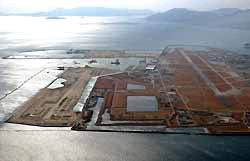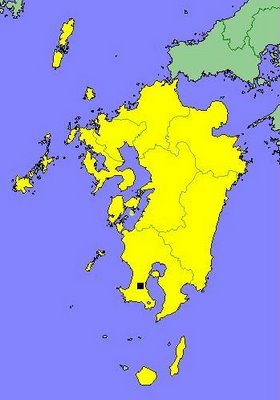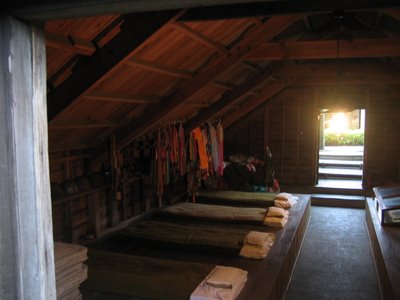
About 40 km west of Hiroshima is Iwakuni, once the headquarters of the Kikkawa clan, a family of
daimyou, or feudal lords. While the area at the base of the castle is a relatively well preserved 17th century castle town, Iwakuni is also home to a US Marine Corps Air Station (pictured left) currently housing 10,000 personnel, "the
Marine Corps' best kept secret." On March 12 of this year, 59 percent of Iwakuni residents turned out to vote on a referendum to extent the US-Japan treaty that allows the base to exist, and a resounding 90 percent voted "no." And yet just as in Okinawa, Koizumi has reassured Bush that the base will be allowed to stand. (In the case of Okinawa, Koizumi has
devised a number of anti-democratic methods of evading a 2005 residents' referendum against bases on Okinawa-Honto.) A
growing anti-base movement in Iwakuni has mobilized in the wake of the referendum, but Koizumi continues to placate Bush with empty promises. As Eric Johnston of the Japan Times
wrote for Japan Focus recently, "[W]hoever sits in the Prime Minister's chair come September will have to deal with the fact that even local municipal governments where opposition to hosting more troops may not be as strong as Iwakuni are going to have to be diplomatically finessed into accepting an agreement that they had no direct say in."
A statue of Sasaki Kojiro, famous for his duel against the legendary Musashi Miyamoto in 1612 (incidentally Sasaki's last act); also featured in the long-running manga
"Vagabond" series, a multi-part graphic biography of Musashi.
 Kintai-kyou
Kintai-kyou, a five-arch wooden bridge constructed by Kikkawa Hiroyoshi in the mid-17th century:


A statue of Kikkawa Hiroyoshi, leader of the Kikkawa clan. His castle is visible on the mountaintop:
























































